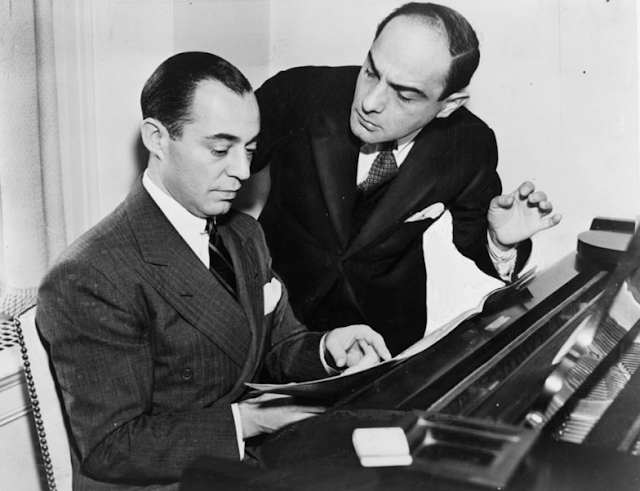photo by Ajay Suresh
Dr. Ernest Goodrich Stillman was born in Newport, Rhode Island on July 14, 1894, the son of multi-millionaire banker James J. Stillman and his wife, Sarah Elizabeth Rumrill. Upon his father's death in 1918, Ernest and his two brothers, Charles and James, each inherited $9,694,561. Ernest's windfall would be the equivalent of about $196 million in 2024.
Dr. Stillman graduated from Harvard in 1908 and earned his medical degree from Columbia University in 1913. He was a research staff member at the Rockefeller Institute Hospital (not especially surprising considering that two of his sisters, Sarah and Isabel, had married Rockefellers). Stillman and his wife, the former Mildred Marguerite Whitney, had three daughters, Jane, Dora Whitney and Penelope; and three sons, John Sterling, Calvin Whitney and Timothy Goodrich.
In 1924, Stillman purchased the three high-stooped brownstones at 45 to 49 West 75th Street and hired the architectural firm of Cross & Cross to design a replacement mansion on the site. Completed the following year, its architect of record was H. W. Andrews. He designed the 51-foot-wide, four-story mansion in the neo-Federal style, giving East 75th Street a splash of 18th century America.
A graceful fanlight crowned above the main entrance. Sitting above a stone bandcourse, four large, multi-paned windows at the second floor were fronted by iron balconies. The slate-shingled mansard was punctured by five alternating pedimented and flat-headed dormers. A Chippendale railing crowned the roof.
photo by Wurts Bros. from the collection of the Museum of the City of New York.
Stillman's mother was taken to her country home at Cornwall-on-Hudson in 1925, the year the family moved into 45 East 75th Street. Her health was fragile and Middletown [New York] Daily Herald said, "it was said she could not live out the year." On October 18, Sarah Stillman was brought from Cornwall-on-Hudson to 45 East 75th Street in a private ambulance. Ernest G. Stillman soft-peddled her condition, telling reporters, "she made the trip by motor to avoid the fatigue of transferring from train to ferry." Sarah Elizabeth Rumrill eventually returned to her home at 102 East 35th Street, where she died a little over a month later, on November 30, at the age of 73.
Stillman filled the 75th Street mansion with a magnificent collection of Japanese art and literature. It was later divided between the Widener Library and the Peabody Museum. The family maintained two summer homes, the Cornwall-on-Hudson residence and another in Northeast Harbor, Maine.
Jane, born in 1913, was the eldest of the Stillman children. On October 26, 1931, the New York Evening Post reported, "Dr. and Mrs. Ernest G. Stillman will present their daughter, Miss Jane Stillman, to society at an old fashioned afternoon reception, at their home, 45 East Seventy-fifth Street. This has been arranged primarily for old friends of the family, and there will not be dancing."
Debutante entertainments continued throughout the winter social season, and on December 23 the newspaper announced that Ernest and Mildred, "are giving a dinner-dance this evening at the Ritz-Carlton for their daughter, Miss Jane Stillman. The debutante made her format debut at a tea at the Stillman home on December 6, and tonight's party has been arranged for her friends in the younger set."
Mildred's entertainments in the 75th Street mansion often centered around charities. On November 15, 1942, for instance, The New York Times reported that she would be hosting a tea "for members of the debutante committee aiding in the plans for the annual card party in behalf of the New York Child's Foster Home Service." She and Ernest jointly provided funds for the construction of the Cornwall Hospital, and she was a director and chairman of the foster home committee of the New York Nursery and Childs Hospital, to which she contributed generously.
She was, as well, an author, editor and poet, best known for her children's books. She was already a successful author when she and Ernest were married in 1911. Among her children's books were The Mermaid and the Little Fish, A Present for Santa Claus, and A Boy of Galilee. Additionally, The New York Times said, "she was widely recognized as a translator of writings by the French religious philosopher, Francois Fenelton."
Philanthropy was as much a part of Ernest Stillman's life as was medicine. He funded the building of Shaler Hall and the Fisher Museum at Harvard University, donated a horticultural research unit in Petersham, Massachusetts to the university, and financially supported the Cornwall Hospital in upstate New York. Ardently interested in forestry and silvicultural research, he donated the 3,800-acre Black Rock Forest along the Hudson River in Orange County, New York to Harvard along with a large endowment.
Dr. Ernest Goodrich Stillman died in the mansion on December 16, 1949 at the age of 65. His love of trees and forestry was reflected in his will, which directed his executors "to have my remains cremated and the ashes scattered in Black Rock Forest."
Eight months later, on August 22, 1950, Mildred Marguerite Whitney Stillman suffered a fatal heart attack in the house at the age of 60. The New York Times mentioned that, in addition to her many philanthropies, "She was a founder and former secretary of the New York Junior League."
The mansion was purchased by Miss Hewitt's Classes, a private girls' school founded in 1920. A renovation completed in 1951 resulted in classrooms and offices on each floor.
Three years later, the school purchased the vintage house across the street at 44 East 75th Street for dormitory purposes. It continued to expand its holdings in April 1964, when it purchased the adjoining house at 46 East 75th Street.
photo by Jim Henderson
By then, name of Miss Hewitt's Classes had been changed to The Hewitt School. It remains a private girl's school for grades kindergarten through 12. The exterior of the Stillman mansion has been respectfully preserved.
LaptrinhX.com has no authorization to reuse the content of this blog
.jpg)




























.png)